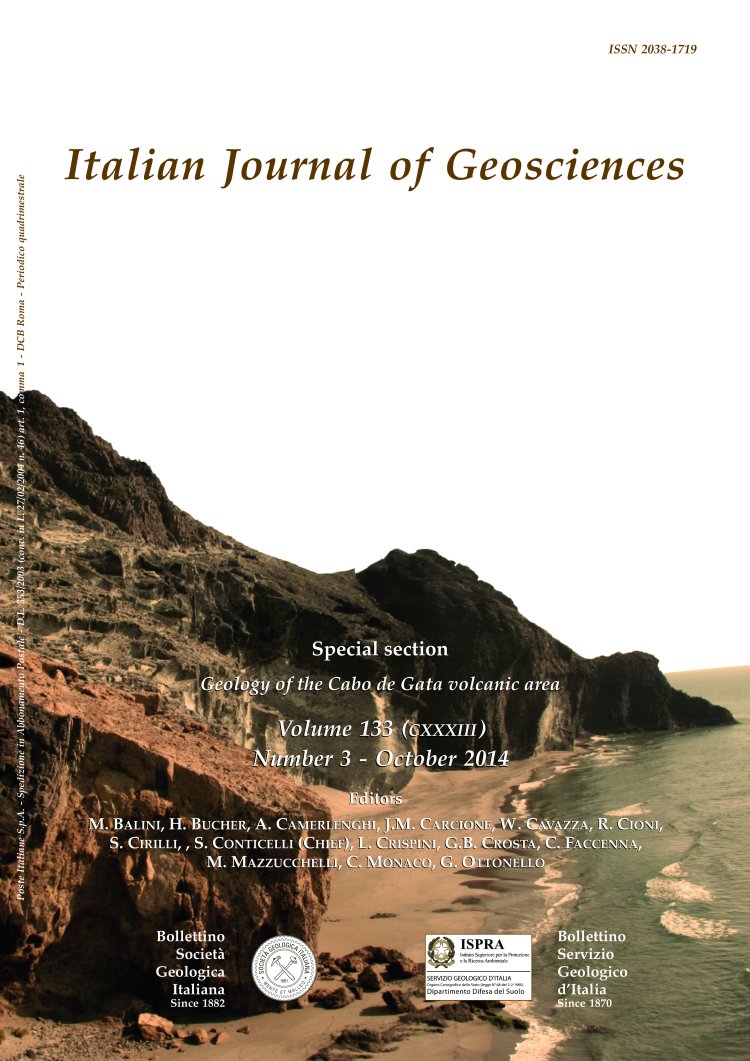
Submarine Volcanism: a Review of the Constraints, Processes and Products, and Relevance to the Cabo de Gata Volcanic Succession
Raymond A.F. Cas (*) & Guido Giordano (**)
(*) School of Geosciences, Monash University, Clayton, Victoria, Australia 3800. ray.cas@sci.monash.edu.au; tel: +613 99054897; fax: +613 99054903.
(**) Dipartimento di Scienze Geologiche, Università Roma TRE, Roma, Italia. guido.giordano@uniroma3.it
Volume: 133 (2014) f.3
Pages: 362-377
Abstract
Understanding of submarine volcanism still lags behind understanding
of subaerial volcanism for the obvious reason that eruptions
are usually not, or only partially visible, and deposits are largely
inaccessible. In addition, our understanding of the effects of the
ambient water mass and the way in which erupting magma and
water interact, and the ways in which the physical properties of the
water mass control and influence eruption styles, dispersal processes
and deposit characteristics, is still at a relatively early stage. In particular,
in the past there has been a very simplistic approach to assessing
constraints on eruption styles using only ambient hydrostatic
pressure, whereas equally important properties such as bulk modulus,
compressibility, deformability, attenuation properties, thermal
conductivity, heat capacity, have not been adequately considered.
This review summarises our understanding on these issues, and
briefly summarises varying eruption conditions, styles and deposit
characteristics.
The origin of pumice deposits preserved in subaqueous settings
needs to be interpreted with care. They could represent local explosive
events, but could also represent pumice sourced from distant
explosive events and vents, even subaerial, and deposited by fallout
through water, the passage of pyroclastic flows into water from
subaerial vents, long distance rafting of buoyant pumice by currents,
reworking and resedimentation, and even non-explosive subaqueous
vesiculation and quench fragmentation of subaqueously erupted
lavas in shallow or even deep water.
The Miocene Cabo de Gata volcanic succession of southeastern
Spain was deposited in shallow marine environments based on interbedded
fossiliferous limestones, which represent periods of volcanic
hiatus. The volcanic facies are consistent with a shallow marine setting,
involving eruption of low volatile bearing magmas to form
andesite and dacite lava flows, domes and associated hyaloclastites,
as well as eruptions of volatile rich rhyolitic magmas that produced
pumice deposits erupted from subaerial vents or vents at water
depths that were too shallow to suppress explosive eruptions
through the effects of hydrostatic pressure, but were then reworked
and resedimented.
Keywords
Submarine volcanism, effusive eruptions, explosive eruptions, deposit types, Cabo de Gata, shallow marine volcanism.
Get Full Text